Deborah J. Ross's Blog, page 127
December 25, 2014
Holidays Wishes For You
Published on December 25, 2014 13:56
December 23, 2014
Kindness of the Season
 Amidst the wishes of merry this and joyous that, I am reminded that for far too many of us, the winter holidays are stressful to the point of crazy-making. The pressure to buy things we don't have money for, or even if we do, the pressure to find "just the right present" sends us into a frenzy of consumerism. Most of us eat and drink far too much, don't exercise enough, and in general let good intentions go by the wayside.
Amidst the wishes of merry this and joyous that, I am reminded that for far too many of us, the winter holidays are stressful to the point of crazy-making. The pressure to buy things we don't have money for, or even if we do, the pressure to find "just the right present" sends us into a frenzy of consumerism. Most of us eat and drink far too much, don't exercise enough, and in general let good intentions go by the wayside.Then there are the family dynamics. The winter holidays are like putting dysfunctions old and new on steroids. Under the guise of ho-ho-ho bonhomie, whatever has been hurtful and unresolved resurfaces. Alcoholism and abuse emerge from the shadows. Unhealed wounds re-open.
The shortness of the days and the difficulty of getting fresh air and sunshine add to the gloom. Instead of green leaves and flowers, we find ourselves surrounded by frozen slog or mud. If we have any predisposition at all to Seasonal Affective Disorder, it perks right up.
To resist all this, we need black-belt self-care, not just for ourselves, but for the people we love. Kindness, simplicity...slowing down. Breathing. Stretching. Reflecting. Taking the time to feel what we need to nourish our bodies, our mind, our spirits.
The best holiday gift we can give is to be fully present with one another. To do that, most of us need reminding that we ourselves are precious. When our hearts are open, not only do we become fully alive, but we inspire and complete the aliveness of those around us.
In this, and every season, be peace. Be joy. Be love. Be yourself.
Published on December 23, 2014 10:40
December 19, 2014
The Tajji Diaries: Rainy Day Dogs
 First, a confession: the title is misleading. Every German Shepherd Dog we’ve owned has not cared at all about rain, even Oka, who thought water on the ground was poisonous. Puddles, lakes, the ocean – not going there. But water from the sky seemed to be unworthy of notice. It is, however, noticed by the resident monkeys, who have devised utterly senseless rules regarding what must be done before entering the house.
First, a confession: the title is misleading. Every German Shepherd Dog we’ve owned has not cared at all about rain, even Oka, who thought water on the ground was poisonous. Puddles, lakes, the ocean – not going there. But water from the sky seemed to be unworthy of notice. It is, however, noticed by the resident monkeys, who have devised utterly senseless rules regarding what must be done before entering the house.First, the rubdown. There is no need for this from the dog’s perspective. German Shepherd Dogs have double coats: an outer coat of long hairs that form a water-repellant layer, and an inner coat of soft, fluffy fur. (When bathing the dog, it takes foreverto wet the inner coat and even longer to rinse it and even longer to dry it. Fortunately, GSDs “blow their coats” – explosively shed the under layer – twice a year, so there’s no need to bathe them often.) So the dog’s skin is dry and warm while the outer coat gets covered with drops of water. Tajji sees no reason why she must be massaged with a towel, but she enjoys it anyway. Then comes the belly and inner sides of her legs, also fine. Then lower legs and paws. When we first got her, she was paw-shy. One of her dewclaws had split down to the quick and she very much did not want that paw handled. We worked with her to desensitize touching and then holding her paws, and this was well in place by the time the rains began. Instead of just picking up a paw, I’d say “paw” and wait a second, then gently lift it and gently run the towel over her pads. The operant word is gently. I’d rather have a bit of mud tracked in and the dog come to trust that she will not be hurt if I touch her paw. Now she lifts her front paws at the signal, although she, being a girl dog, hasn’t figured out how to balance as she does the same with her rear paws. With another dog, “Yes!’ and a treat might be necessary, but Tajji does just fine with praise and petting.
The second challenge of rainy days is having to stay indoors all day. Tajji is old enough (at 10 ½, definitely a geriatric dog) that she doesn’t require hours of vigorous exercise every day, the way a young German Shepherd Dog does. She’s happy to hang out with her people and drowse. When rain goes on for days at a time, however, we all need something a bit livelier: hence, indoor dog games.
Fetch with soft toys. Tajji will mouth her stuffed toys but not chew on them, except for the labels, which she understands must be removed. Soft toys don’t roll under furniture or put dents into things.Chew toys and non-messy treats like rawhide chews. These require monkey supervision.“Where is it?” – I put Tajji in a down/stay where she can’t see the living room, walk around to leave a scent trail, and hide a treat. I come back, release her, and she gets to follow where I’ve been. Sometimes she’ll air-scent the treat. Besides being fun and good exercise for her brain, the game reinforces looking to me for signals and her self control when she’s in the down.“Romp” – we began this as a way to discharge anxiety before donning her harness, but it can be a game in itself. It doesn’t last long, which is good because there’s a definite risk of collision with the furniture.Obedience work. Practicing relaxation protocols like eye contact.The Crate Game. We’re just learning this one. From across the room, on command, the dog races to the crate, spins around, drops into a down, and waits happily for a treat. Obviously, this requires learning and drilling very small steps (or the dog would just look at you, You want me to do what? Foundational steps include being happy in the crate, and having a solid down and stay. She goes happily into her crate, although not at a dead run, turns, and settles into a down. This is particularly useful if someone she doesn’t know comes to the door. Her crate is a safe, happy place, just like a den. Even if she’s barking at first, she’ll go into the crate and then settle. This is not only easier on the monkeys, but healthier and less stressful for her.
What are your favorite rainy day strategies for your dog?
Published on December 19, 2014 01:00
December 17, 2014
Midwifing a Story: Beta Readers and Critiquers
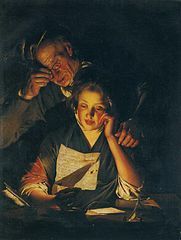 A “story midwife” is someone whose insightful feedback helps the writer to make the story more fully what it is intended to be. A while ago, I wrote about Trusted Readers, the unsung heroes of this process. Sometimes they receive thanks in the Acknowledgements page of a novel, but rarely for a short story. Now let’s talk about more visible helpers: beta readers and critiquers.
A “story midwife” is someone whose insightful feedback helps the writer to make the story more fully what it is intended to be. A while ago, I wrote about Trusted Readers, the unsung heroes of this process. Sometimes they receive thanks in the Acknowledgements page of a novel, but rarely for a short story. Now let’s talk about more visible helpers: beta readers and critiquers.Most of the time, there is little functional difference between beta readers and critiquers. Both read a story in draft form and respond with comments and analysis. Unlike a Trusted Reader, a beta reader or critiquer is usually either a writer or someone knowledgeable about the internal workings of fiction, like a professional editor. So the feedback may go more along the lines of technical criticism and less a generalized “this didn’t work for me.” A beta reader acts like a Trusted Reader-with-expertise, whereas a critiquer focuses on pinpointing weaknesses and often suggesting solutions, many times in a workshop or other group setting. For this blog post, however, I’ll use the terms interchangeably.
Critiques often take place in a structured setting, such as a workshop. My first experiences with exchanging critiques were done through the Science Fiction and Fantasy Workshop, a by-mail-with-newsletter forum run by Kathleen Dalton-Woodbury (back in the 1970-90s or a little beond, if I remember correctly). I’ve also attended ongoing face-to-face workshops, as well as weekend groups at conventions. All have involved both giving and receiving critiques. Like many writers, I have cultivated a small group of “go-to” beta readers. Although it’s often not stated explicitly, the understanding is that over the course of time, each of us will critique a story from the other.
For me, and for many other writers, a workshop format is invaluable, especially at the beginning of our writing careers. (Workshops also have pitfalls, which is a whole other topic in itself.) For those of us who have difficulty seeing the faults in our work or understanding writing principles from books, having a patient, sympathetic fellow writer “to explain things in words of one syllable” can boost our insights and progress tremendously. Learning how to look critically at someone else’s work trains our “editorial eye” and helps us to see our own stories more objectively. Finally, workshops foster camaraderie and offer crucial support along the lonely road to publication. Many of those other beginning writers from SF & FW have gone on to notable careers – we “came along” together, learning from one another.
Yet another thing that distinguishes critiquers is the granularity of the comments. Sure, you sometimes get sweeping “this character never worked for me” but you are more likely to get a detailed list of all the inconsistencies in motivation that caused a lack of connection for that character and how that affected other aspects of the story. Depending on where the writer and critique are in their careers, comments may come in the form of shorthand, relying on the shared jargon of the craft. A Trusted Reader might say, “I got pulled out of the character’s head,” and a critique might abbreviate the same observation as “POV bobble.” (See The Turkey City Lexicon for useful and occasionally humorous examples – Idiot Plot, Handwaving, and Infodump, for example.) Such shorthand is more than a convenience, for it assumes the writer understands the principles of storytelling and prose craft and knows how to fix them.
A beta reader may or may not make suggestions as to how to improve a story’s weaknesses. Much depends on the relationship between writer and reader, as well as how the request of a critique was framed. Many writers strongly object to such suggestions, seeing them as attempts to rewrite the story according to the beta reader’s taste and vision (not their own). Others feel that even the best-intentioned suggestions impair their own creative solutions. Some go so far as to eliminate a suggested change, no matter how good it is, just because it came from someone else. Yet other writers are happy to see possibilities other than the one that didn’t work.
Beta readers offer a “second pair of (knowledgeable) eyes” that furnish feedback before a story is submitted to a publisher. Sometimes editors freelance; that is, they do not acquire books, but they work with a manuscript as if they were preparing it for publication. This is a fairly recent phenomenon, one that has arisen partly with advent of self-publishing, partly from the increasingly competitive market in traditional publishing (and the need to fine-tune and polish a manuscript to present the most professional presentation possible). Such editors may do much of the work of a publisher’s book editor, but they do it before the sale, not after the publisher is committed to the book. They are one of the few legitimate examples of a writer paying money before publication (the antithesis of Yog’s Law: “Money flows to the author.”) For all the benefits of hiring a freelance editor, there are drawbacks: they cost money; they may envision the project in a different way than the acquiring or book editor; they may teach or mentor but they do not offer the opportunity for the author to practice critiquing skills herself. Still, many of them have superb professional editing credentials and are worth every penny under the right circumstances.
If you’ve detected a bias here, it’s real. Because I learned writing craft from in-person workshops and by exchanging critiques with writers of about the same skill level, I think in terms of learning to see and to do at the same time, and I value the fellowship of a peer group of writers. Other than running your story off on a mimeo machine (which tells you how long I’ve been at this) or paying a printer or vanity press, there wasn’t any self-publishing. If you wanted your story professionally published, you had to sell it to a publisher, who hired editors and (most of the time, anyway) hammered your prose into shape (and handled cover art, marketing, etc.) Now that we have both electronic and Print On Demand formats, I believe the need for critical feedback is even greater than before. It’s all too easy to take a rough draft with plot holes you could drive a tractor through, format it, and slap it up on an ebook site. It’s up to us, the writers, to make sure that whichever route we take, we do not compromise on quality. Since I’m as blind as the next one about my own work, I cherish my beta readers (and send them virtual roses and chocolate, not to mention praises in the Acknowledgements page of the published book!)
The painting is by Joseph Wright of Derby (1734-1797
Published on December 17, 2014 01:00
December 10, 2014
Career Chat: Writing Progress Goals
 One of the most common questions I get asked is how I schedule my writing time. Non-writers often think we either write only when the muse strikes (and then, accompanied by quantities of alcohol, swathed in tobacco or other botanical smoke, and living in the most depressing garret imaginable, surrounded by the wreckage of countless relationships) – or we get up at 7, sit down at the computer/typewriter at 9, take a one-hour lunch break at noon, and work steadily until 5. I am quite sure there are writers who do follow those schedules, but I’m not one of them.
One of the most common questions I get asked is how I schedule my writing time. Non-writers often think we either write only when the muse strikes (and then, accompanied by quantities of alcohol, swathed in tobacco or other botanical smoke, and living in the most depressing garret imaginable, surrounded by the wreckage of countless relationships) – or we get up at 7, sit down at the computer/typewriter at 9, take a one-hour lunch break at noon, and work steadily until 5. I am quite sure there are writers who do follow those schedules, but I’m not one of them.Some writers need long stretches of time to dig deep into their stories. I’m not one of them, either. I’m a slow-and-steady plodder. There’s nothing right or wrong about either way; each writer discovers what’s right for them. So the following comes from my own experience.
If I’m going to write a novel and a couple of short stories every year (or two novels in 18 months), I need to write consistently, especially when I’m in the early drafting stages. All bets are off when I’m writing proposals, rewriting, or revising to editorial order. Most of the time, I find daily goals helpful, so long as they are achievable. I don’t find it at all supportive to post my progress in terms of words of pages. One writer of my acquaintance used to post not only words written but anti-words; words the writer had deleted. I like that the writer acknowledged that not all progress can be measured by the total number of words.
A better goal for me is to write well.
Over the years, I’ve learned to pay attention to resistance. The story just isn’t coming together; the characters are not doing what I want them to do! I simply can’t settle down and focus. As frustrating as it is, resistance can be my friend. I’m not inherently a reluctant writer; I love it when the story in my imagination flows through the words. I love discovering things in the story I didn’t know were there when I began. So I trust that if I’m restless and grouchy, or the story is restless and grouchy, that there’s something I need to pay attention to. I might need to go for a long walk and talk things through out loud. (At various times, I’ve had nonwriter friends who were nonetheless wonderful sounding boards for story problems.) I might need to go back to where the story lost its balance, that ghostly box canyon of ideas, that out-of-character decision. Or that point where the story started deviating from my outline, but in the right way, and I’ve been trying to deform it back to the prearranged path.
When things aren’t going so well, or at all, I can help myself to focus by deciding what I want to happen today. It could be a certain number of pages or words, especially if the story is flowing smoothly. Or it could be to find out where I went wrong, so I know how much to unravel. It could be to write one scene, but a scene that has to be nailed exactly right, like the dismount of a Gold-medal Olympic gymnast. This helps to relieve the pressure to produce words, regardless, and also eases the way through those thorny passages to full speed ahead.
Published on December 10, 2014 01:00
December 3, 2014
Book Giveaway: My Holiday Gift to You
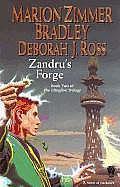 'Tis the season to express our gratitude for friends and family, and to share many wonderful things -- gifts, memories, fun times...books! I offer my readers a selection of my books in thanks for their enthusiastic support. I'd likely keep writing even if no one every read a word, but there's immense satisfaction in hearing that my stories have touched the hearts of my readers.
'Tis the season to express our gratitude for friends and family, and to share many wonderful things -- gifts, memories, fun times...books! I offer my readers a selection of my books in thanks for their enthusiastic support. I'd likely keep writing even if no one every read a word, but there's immense satisfaction in hearing that my stories have touched the hearts of my readers.The deal:
1. Send me an email (click "Please Let Me Hear From You," upper left, with your choice of books and a mailing address. Limit one of the starred books or two of the unstarred ones. In your email, let me know if or how you'd like the book signed (to you or someone you're giving the book to, or just a signature). If you select a starred book, give me an alternate title in case I'm out of them. (First come, first served on the limited quantities.)
2. I'll pay domestic mail, although contributions ("Donate" button waaaay down on the lower left) for postage are most welcome. I'll split postage for overseas.
3. Autographed bookplates (great if you already have my books!) - let me know how many you'd like.
4. Should you feel moved to review the book, that would be most welcome.
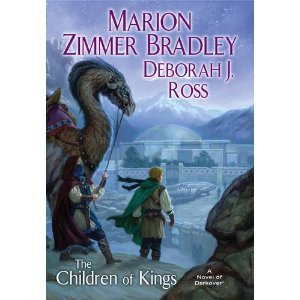
The books:
Zandru's Forge (Clingfire #2 but works as standalone) (hardcover)
Hastur Lord (standalone) (hardcover)
*A Flame in Hali (Clingfire #3) (hardcover)
*The Children of Kings (standalone) (hardcover)
The Children of Kings (mass market paperback)
*The Heir of Khored (Seven-Petaled Shield #3) (mass market paperback)
*Collaborators, my Lambda Award Finalist sf novel (standalone) (trade paperback)
Published on December 03, 2014 01:00
December 1, 2014
The Tajji Diaries: Treat!
 The foundational concept behind positive training techniques is that behaviors have consequences. Pairing a desirable behavior with a reward increases the likelihood that behavior will be repeated. (Punishment, or an unpleasant consequence, is far less effective because while it may decrease the frequency of the undesired behavior, it also increases the response of fear, which makes it harder for the animal to learn anything.) In working with dogs, we often use food as a reward. Since human language means nothing to a dog, we need a means of communicating “Yes, you did the right thing!”
The foundational concept behind positive training techniques is that behaviors have consequences. Pairing a desirable behavior with a reward increases the likelihood that behavior will be repeated. (Punishment, or an unpleasant consequence, is far less effective because while it may decrease the frequency of the undesired behavior, it also increases the response of fear, which makes it harder for the animal to learn anything.) In working with dogs, we often use food as a reward. Since human language means nothing to a dog, we need a means of communicating “Yes, you did the right thing!” Food is a primary reinforcer because it’s a basic need, and yummy food lights up the brain’s pleasure centers. To more accurately identify the desired behavior, we can use a secondary reinforcer (like a clicker or a word such as “Yes!”) that we then associate with the primary reinforcer. (Click = treat.)
Food is not the only possible reward. Depending on the dog’s temperament, a suitable reward might also be a favored toy, something to chase, or praise. I saw this in the mother of the puppy we owned a couple of summers ago; she was so play-driven as to be oblivious to food but would immediately respond to commands for the chance to play with her favorite toy, a ball on a cord. Whatever it is, the reward must be something of high value to the dog.
Folks attempting to train their dogs with reward-based training can run into problems because they don’t use sufficiently yummy food. Kibble isn’t going to cut it for most dogs, especially if they’ve already been fed and aren’t hungry. Think of it this way:
You’re wandering around a playground, trying out various equipment. Some things are just plain fun, like whooshing down the slide. Others, meh. But when, in your ramblings, you jog a hundred feet, someone hands you a nickel, is that going to make you eager to repeat it? How about if someone hands you a dollar? Twenty dollars? A thousand dollars? Or, in food terms, a stalk of celery versus a Godiva chocolate (versus a whole box of Godiva chocolates). In training, the treats must be sufficiently yummy to that particular dog to elicit the “Wow, let’s do that again!” response.
It’s important to note the difference between a bribe and a reward. In a bribe, the treat is offered before the behavior is performed, so the dog’s focus is on the treat, not the choice of behavior; a reward is just the opposite. A reward is anything that increases the frequency of the behavior preceding it.
Dogs vary in what is yummy to them, just like people do. Kibble may be meh to okay for most dogs, but how about freeze-dried salmon or beef liver? Bits of cooked chicken? Slivers of hot dog? One of the fun things about owning a dog is discovering what lights him up, both the medium-value treats and the PLEASETELLMEWHATTODOI’LLDOANYTHINGtreats.
So far, Tajji’s Treat List is topped by freeze dried beef liver, freeze dried lamb lungs, and beef or chicken baby food. Next come chicken liver-based pea-sized training treats (such as Zuke’s or Lil’Jacks). (Dried green tripe is, hands down, the highest endorphin-crazy-making treat, but it’s hard to find and crumbly to use.)
An example of how to use both low or medium value treats with high value treats is Sandi Pensinger’s “Name Game.” Throw a low value treat on the ground a little distance away. As soon as the dog snarfs it, call the dog’s name. The instant the dog looks toward you, click or say “Yes!” and reward with the high value treat. The lower value one is to get the dog facing away from you so that you can practice reinforcing the turn-toward-you (and come to you).
As an interesting side note, one of our cats, our black male Shakir, is motivated by food strongly enough so I’ve been training him to do various tricks (like touching his nose to mine when I bend over or turning in circles). I use the same techniques as with the dog. Shakir, however, is not at all finicky about what he considers a treat. Cat kibble, even old cat kibble, works just fine. He’s convinced that anything given to him in the kitchen (where we train, because Tajji is not allowed in the kitchen) must be superior to the same food offered in his dish.
Just about every animal I’ve owned has enjoyed foods not normally considered part of that species’ diet. The horse I had in high school adored watermelon rinds. My old gray tortoiseshell cat, Cleo, would steal cooked broccoli from the table and run off with it like a bandit. Various cats and dogs loved peanut butter and avocados.
Tajji likes the stalks of romaine lettuce.
She came to us liking them, and with the catch-it game. I toss 1” sections from the base into the air and she snaps them in her jaws, then chews them (rather juicily, as dog’s teeth are not exactly designed for lettuce). Because of her age, I try to aim so she doesn’t have to leap into the air, although her accuracy is quite good. It’s a lovely game, one we both enjoy.
What’s your pet’s favorite treat?
The photo is by Duró Sándor, public domain.

Published on December 01, 2014 01:00
November 28, 2014
[links] A few nifty links for Friday morning
Neil Gaiman takes on fairy tale stereotypes: "You don't need princes to save you," says Neil Gaiman, speaking about his new fairy tale, The Sleeper and the Spindle. "I don't have a lot of patience for stories in which women are rescued by men." And so, in his slim, gilded, wicked book, a beautiful young queen calls off her own wedding and sets out to save a neighbouring kingdom from its plague of sleep.
Yogurt lives up to its rep as a healthy food: Yogurt was linked to a significantly lower risk of diabetes. And this was true even after controlling for factors linked to diabetes risk like body mass index (BMI) and diet. The team then pulled in data from previous studies to add to theirs, and calculated that 28 grams of yogurt per day was linked to an 18% lower risk of type 2 diabetes.
We've got a candidate for life outside of Earth: Scientists think Europa is the best candidate for life outside Earth in the solar system because life depends on three key ingredients - liquid water for chemical reactions, essential chemicals and an energy source - and Europa seems to have all three.
Dogs and humans co-evolved. The scientists found that dog owners' aroma actually sparked activation in the "reward center" of their brains, called the caudate nucleus. Of all the wafting smells to take in, dogs actually prioritized the hint of humans over anything or anyone else.
In memory of Jay Lake's wonderful [linksalad]
Yogurt lives up to its rep as a healthy food: Yogurt was linked to a significantly lower risk of diabetes. And this was true even after controlling for factors linked to diabetes risk like body mass index (BMI) and diet. The team then pulled in data from previous studies to add to theirs, and calculated that 28 grams of yogurt per day was linked to an 18% lower risk of type 2 diabetes.
We've got a candidate for life outside of Earth: Scientists think Europa is the best candidate for life outside Earth in the solar system because life depends on three key ingredients - liquid water for chemical reactions, essential chemicals and an energy source - and Europa seems to have all three.
Dogs and humans co-evolved. The scientists found that dog owners' aroma actually sparked activation in the "reward center" of their brains, called the caudate nucleus. Of all the wafting smells to take in, dogs actually prioritized the hint of humans over anything or anyone else.
In memory of Jay Lake's wonderful [linksalad]

Published on November 28, 2014 01:00
November 27, 2014
Winter Reading, part 2
As the end of the year approaches, my stack of to-be-reviewed books grows ever taller. I realized to my horror that I am rapidly approaching the point of not being able to remember what I liked or disliked about each story. So here are reviews of varying lengths for your amusement – and hopefully a few will pique your interest enough to check out the books themselves.
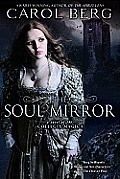 The Soul Mirror by Carol Berg (Roc, 2011). I’m an unabashed Carol Berg fan. I love her world-building, her characters, and the way she puts a story together. This series is new to me, and I inadvertently started with the second “Collegia Magica” book – and had no difficulty at all, so seamlessly did Berg weave in all the backstory I needed. Sometimes, I find a biiiiig book daunting, but in Carol Berg’s case, it’s fantastic because I want to spend a long time in her world. This is Renaissance/Gothic/romance/fantasy with echoes of Jane Eyre and Hamlet (a young woman with a great deal of common sense and without morbid self-doubt, with lots of skeletons in the family closet, but determined to solve her sister’s murder). Oh, and ghosts. Complex like dark chocolate. Addictive.
The Soul Mirror by Carol Berg (Roc, 2011). I’m an unabashed Carol Berg fan. I love her world-building, her characters, and the way she puts a story together. This series is new to me, and I inadvertently started with the second “Collegia Magica” book – and had no difficulty at all, so seamlessly did Berg weave in all the backstory I needed. Sometimes, I find a biiiiig book daunting, but in Carol Berg’s case, it’s fantastic because I want to spend a long time in her world. This is Renaissance/Gothic/romance/fantasy with echoes of Jane Eyre and Hamlet (a young woman with a great deal of common sense and without morbid self-doubt, with lots of skeletons in the family closet, but determined to solve her sister’s murder). Oh, and ghosts. Complex like dark chocolate. Addictive. The Specific Gravity of Grief, by Jay Lake (Fairwood, 2010). Written when Jay was still struggling
 with metastatic colon cancer, this fictionalized version follows another cancer patient as his life disintegrates. “Long ago, when he was fat, happy and colorful, the ragged man used to joke that perhaps it was his purpose in life to serve as an example to others. While he still believes that might be true, these days he is more inclined to think that his purpose in life is to absorb the pain of others. A modern day sin-eater, with cancer the bread of error.” Wise, passionate, generous – just like Jay. Cancer sucks.
with metastatic colon cancer, this fictionalized version follows another cancer patient as his life disintegrates. “Long ago, when he was fat, happy and colorful, the ragged man used to joke that perhaps it was his purpose in life to serve as an example to others. While he still believes that might be true, these days he is more inclined to think that his purpose in life is to absorb the pain of others. A modern day sin-eater, with cancer the bread of error.” Wise, passionate, generous – just like Jay. Cancer sucks.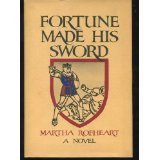 Fortune Made His Sword, by Martha Rofheart. A well-done, absorbing fictional account of the rise of Henry V. The cool thing is that the author was a theatrical actress, well versed in Shakespeare’s “Chronicle” plays. I can imagine her going, “There’s a lot more to say about this king – I’ll write a novel!” What could have been drek turned out quite lively, filled with colorful settings and interesting characters. Check it out if you enjoy historical fiction.
Fortune Made His Sword, by Martha Rofheart. A well-done, absorbing fictional account of the rise of Henry V. The cool thing is that the author was a theatrical actress, well versed in Shakespeare’s “Chronicle” plays. I can imagine her going, “There’s a lot more to say about this king – I’ll write a novel!” What could have been drek turned out quite lively, filled with colorful settings and interesting characters. Check it out if you enjoy historical fiction.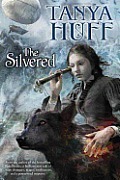 The Silvered, by Tanya Huff. Huff is one of my favorite writers, one I gleefully follow across genre lines. Sexy vampire mysteries, check. Kick ass women military science fiction, check. Urban fantasy, with or without cats, check. So when I saw The Silvered had been released – steampunk werewolves! – my reader’s little heart went all pitter-pat. I will now proceed to gush – nobody does it better: world-building, a believable and intricately executed system of magic, action, romance, characters I care passionately about, silliness and heart-wrenching sadness. Tanya Huff was Guest of Honor at Convolution 2014, and I attended her small group discussion. I asked if there would be any more books set in this world and everyone laughed. I’d come in late and had not realized that just about everyone there had the same question. The answer, alas, is no. This is, in Huff’s words, a “one-off.” So treasure every page!
The Silvered, by Tanya Huff. Huff is one of my favorite writers, one I gleefully follow across genre lines. Sexy vampire mysteries, check. Kick ass women military science fiction, check. Urban fantasy, with or without cats, check. So when I saw The Silvered had been released – steampunk werewolves! – my reader’s little heart went all pitter-pat. I will now proceed to gush – nobody does it better: world-building, a believable and intricately executed system of magic, action, romance, characters I care passionately about, silliness and heart-wrenching sadness. Tanya Huff was Guest of Honor at Convolution 2014, and I attended her small group discussion. I asked if there would be any more books set in this world and everyone laughed. I’d come in late and had not realized that just about everyone there had the same question. The answer, alas, is no. This is, in Huff’s words, a “one-off.” So treasure every page!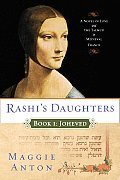 Rashi’s Daughters: Joheved, by Maggie Anton (Plume 2005). This is straight historical fiction, subtitled A Novel of Love and The Talmud in Medieval France. I found out about the series (Joheved has two younger daughters, and there’s another series about Rav Hisda’s daughters, too) from an old school friend. Rashi (Salomon ben Isaac or Shlomo Yitzchaki –1040-1105) was one of the greatest Talmudic scholars of all time. His common name is an acronym based on RAbbi SHlomo Itzhaki. He lived mostly in Troyes, France, during a time of relative calm for Jews, and wrote and taught extensively. His only children were three remarkable daughters, all of whom married Talmudic scholars and undoubtedly were learned as well. Anton has taken an amalgam of documented history, legend, and her own imagination to create a novelization of the life of Rashi’s oldest daughter. She portrays a world that parallels the medieval Christian society that is so much better known to us, and does so with remarkably vivid detail. While there are no fantastical elements as such, any lover of historical fiction, historical genre fiction, will discover many delights here. Among my favorites were the portrayal of growing grapes and turning them into wine, a community event.
Rashi’s Daughters: Joheved, by Maggie Anton (Plume 2005). This is straight historical fiction, subtitled A Novel of Love and The Talmud in Medieval France. I found out about the series (Joheved has two younger daughters, and there’s another series about Rav Hisda’s daughters, too) from an old school friend. Rashi (Salomon ben Isaac or Shlomo Yitzchaki –1040-1105) was one of the greatest Talmudic scholars of all time. His common name is an acronym based on RAbbi SHlomo Itzhaki. He lived mostly in Troyes, France, during a time of relative calm for Jews, and wrote and taught extensively. His only children were three remarkable daughters, all of whom married Talmudic scholars and undoubtedly were learned as well. Anton has taken an amalgam of documented history, legend, and her own imagination to create a novelization of the life of Rashi’s oldest daughter. She portrays a world that parallels the medieval Christian society that is so much better known to us, and does so with remarkably vivid detail. While there are no fantastical elements as such, any lover of historical fiction, historical genre fiction, will discover many delights here. Among my favorites were the portrayal of growing grapes and turning them into wine, a community event.Maplecroft, by Cherie Priest (Roc, 2014). Lesbian Lizzie Borden and her axe take on horrors out of
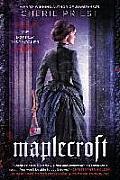 Lovecraft! What’s not to love, especially in the capable hands of Cherie Priest? I confess, I liked her earlier work better than her steampunk novels, but it seems to me that her skill at storytelling increases with each change of genre. I suppose Maplecroftcould be considered steampunk, given the time (1893-4), but the focus is not on gadgetry. No tentacles, but lots of weird transformations and hanging on to sanity with the flimsiest threads. I would expect, given the success of her Boneshaker, that this book would be extensively reviewed, and I have not much to add beyond that the concept got me to buy the book, and the book itself grabbed me from the first page and wouldn’t let go.
Lovecraft! What’s not to love, especially in the capable hands of Cherie Priest? I confess, I liked her earlier work better than her steampunk novels, but it seems to me that her skill at storytelling increases with each change of genre. I suppose Maplecroftcould be considered steampunk, given the time (1893-4), but the focus is not on gadgetry. No tentacles, but lots of weird transformations and hanging on to sanity with the flimsiest threads. I would expect, given the success of her Boneshaker, that this book would be extensively reviewed, and I have not much to add beyond that the concept got me to buy the book, and the book itself grabbed me from the first page and wouldn’t let go.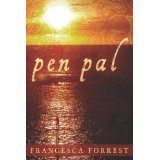 Pen Pal, by Francesca Forrest (CreateSpace, 2013). How does an excellent self-published book finds its way to readers? In this case, I found Pen Pal through a direct contact with the author (I’d edited her short story for one of my anthologies) and a strong recommendation from a fellow author whose opinion I trust. Otherwise, I almost never buy a self-published book, but I was delighted with this one. As the title suggests, the book is comprised of letters from one friend to another. I’m old enough to remember having pen pals, letter-friends I never met in person, some of them on different continents. I’d feel a particular thrill at the sight of an envelope with foreign postmark and colorful stamps. I never met any of these pen pals, and with time, the correspondences dwindled. Forrest has taken this phenomenon – a friendship through letters between two people of wildly diverse cultures – and shaped it as good fiction. There’s a beginning, when teenaged Em, who lives in a floating town called Mermaid’s Hands and may or may not be of selkie folk, puts a message in a bottle and it’s picked by by Kaya, a student-turned-unwitting-activist who is imprisoned over a volcanic caldera called Ruby Lake. Through a series of fortuitous connections and a little magic (or trained birds, as the case may be), the two manage to answer one other, to exchange stories, and to try to help one another. The story development is handled with great skill, the voices are clear and distinct, and the entire reading experience was a pleasure cover to cover. I love stories that have deeper meaning but let me discover it, and this is one. Themes of family, self-reliance, growing up, political repression, the difficulties of being “other” in a conformist society, are all there to be explored or let lie, as the reader wishes. I particularly suggest this book for families with teens as a way of opening up discussions of important topics. And who knows, you might end up with pen pal of your own!
Pen Pal, by Francesca Forrest (CreateSpace, 2013). How does an excellent self-published book finds its way to readers? In this case, I found Pen Pal through a direct contact with the author (I’d edited her short story for one of my anthologies) and a strong recommendation from a fellow author whose opinion I trust. Otherwise, I almost never buy a self-published book, but I was delighted with this one. As the title suggests, the book is comprised of letters from one friend to another. I’m old enough to remember having pen pals, letter-friends I never met in person, some of them on different continents. I’d feel a particular thrill at the sight of an envelope with foreign postmark and colorful stamps. I never met any of these pen pals, and with time, the correspondences dwindled. Forrest has taken this phenomenon – a friendship through letters between two people of wildly diverse cultures – and shaped it as good fiction. There’s a beginning, when teenaged Em, who lives in a floating town called Mermaid’s Hands and may or may not be of selkie folk, puts a message in a bottle and it’s picked by by Kaya, a student-turned-unwitting-activist who is imprisoned over a volcanic caldera called Ruby Lake. Through a series of fortuitous connections and a little magic (or trained birds, as the case may be), the two manage to answer one other, to exchange stories, and to try to help one another. The story development is handled with great skill, the voices are clear and distinct, and the entire reading experience was a pleasure cover to cover. I love stories that have deeper meaning but let me discover it, and this is one. Themes of family, self-reliance, growing up, political repression, the difficulties of being “other” in a conformist society, are all there to be explored or let lie, as the reader wishes. I particularly suggest this book for families with teens as a way of opening up discussions of important topics. And who knows, you might end up with pen pal of your own!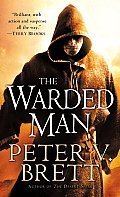 The Warded Man by Peter V. Brett (Del Rey, 2010) This came to me through the freebie bag at the Nebula Award Weekend. The author’s name rang a bell, but nothing more specific. To begin with, I’m underwhelmed by covers featuring a man in a hooded cloak – so overused as to be a cliché for me. But I believe in at least giving a free book a try. This one is a debut novel with an interesting premise: in this fantasy world, every evening, demons arise from the “Core,” meaning underground – wood demons, fire demons, wind demons, the like. Their only motivation seems to be killing (and eating) people (and their animals). Various youthful characters join together to fight them and have adventures. It’s fairly well done, and the depiction of the human settlements struggling against ever increasing fatalities is especially poignant. The action moved right along and never lost my interest. My judgment is that this opening to a series will hit the right notes with certain readers. While I kept turning the pages, something in it was a little off for me. Maybe it was the relentless hatred of the demons and how easy it is to justify violence when your opponent is not human and therefore impossible to have empathy for – they deserve no compassion, as they are completely evil. I prefer more complex adversaries and explorations of how we deal with “the other,” whether it’s Brett’s demons, Peter Jackson’s depiction of Tolkien’s orcs, or what I see in the popular news every day. One small thing that niggled at me was the way Brett changed the spelling of common names; my favorites were Lakton for Laketown (another echo of Tolkien), or Rojer instead of Roger, the kind of pretentiousness found in amateurish writing. Yes, names change over time, but they change organically as part of the evolution of the language. This might not bother another reader, and as I said, I’m sure Brett’s work will find an enthusiastic audience, eager for the next installment of the story.
The Warded Man by Peter V. Brett (Del Rey, 2010) This came to me through the freebie bag at the Nebula Award Weekend. The author’s name rang a bell, but nothing more specific. To begin with, I’m underwhelmed by covers featuring a man in a hooded cloak – so overused as to be a cliché for me. But I believe in at least giving a free book a try. This one is a debut novel with an interesting premise: in this fantasy world, every evening, demons arise from the “Core,” meaning underground – wood demons, fire demons, wind demons, the like. Their only motivation seems to be killing (and eating) people (and their animals). Various youthful characters join together to fight them and have adventures. It’s fairly well done, and the depiction of the human settlements struggling against ever increasing fatalities is especially poignant. The action moved right along and never lost my interest. My judgment is that this opening to a series will hit the right notes with certain readers. While I kept turning the pages, something in it was a little off for me. Maybe it was the relentless hatred of the demons and how easy it is to justify violence when your opponent is not human and therefore impossible to have empathy for – they deserve no compassion, as they are completely evil. I prefer more complex adversaries and explorations of how we deal with “the other,” whether it’s Brett’s demons, Peter Jackson’s depiction of Tolkien’s orcs, or what I see in the popular news every day. One small thing that niggled at me was the way Brett changed the spelling of common names; my favorites were Lakton for Laketown (another echo of Tolkien), or Rojer instead of Roger, the kind of pretentiousness found in amateurish writing. Yes, names change over time, but they change organically as part of the evolution of the language. This might not bother another reader, and as I said, I’m sure Brett’s work will find an enthusiastic audience, eager for the next installment of the story.
Published on November 27, 2014 01:00
November 26, 2014
Gifts of Darkover Table of Contents

Here's the lineup for the next Darkover anthology, to be released in June 2015. I'll show you the cover once it's finalized. I'm very pleased with how the anthology came together.
Introduction: Darkover, An Evolving World, by Deborah J. Ross (editor)Learning to Breathe Snow, by Rosemary Edghill and RebeccaFox
Healing Pain, by Jane M. H. Bigelow Blood-kin, by Diana L. Paxson The Tower, by Jeremy Erman Stonefell Gift, by Marella Sands Compensation, by Leslie Fish Green Is The Color Of Her Eyes So Blue, by

Published on November 26, 2014 10:07




